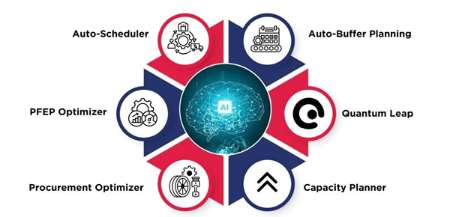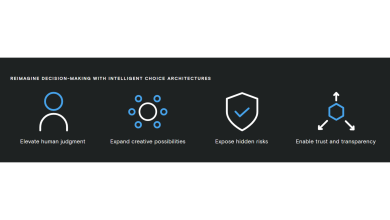
The greatest buzzwords in recent history that everyone talked about but very few really understood: 30 years ago – “Lean Manufacturing”, 20 years ago – “Six-Sigma”, 10 years ago – “Industry 4.0”, and now we have “AI”.
The task of taking AI from ideation to successful scaling has proven more difficult for most organizations than expected. Furthermore, many who succeed in scaling experience little to no value from their AI efforts. This trend will continue for those organizations that fail to truly understand what AI is and how it can positively impact the overall success of their organizations. Fortunately, we have successfully navigated the process from pilot to full-scale deployment for all our engaged clients, including our own companies. Below is a roadmap that outlines, in broad strokes, how to successfully transition AI ideation from pilot to successful and broad-scale deployment.
1. Understand the goal of AI.
The ultimate goal of any for-profit business is maximizing cash flow and increasing market share… That’s it! Any other topic or category brought up is only a means to that end. Growing positive cash generation over time is the end, whereas all other topics are only a corollary means to that end, period! EBITDA enhancement… a means, cost reduction… a means, profit %, safety, quality, customer satisfaction, employee satisfaction… all important means, but not the end. So, in the end, if AI cannot improve your cash flow and market share, you need to rethink your AI strategy.
2. Understand what AI truly is.
Most businesses initially do not truly understand what AI is. The first step is to gain an understanding of what artificial intelligence really consists of and how to leverage both internal (Closed AI) in concert with open (Global-Access AI) to achieve maximum and growing cash flow, leading to improved success of the organization. Creating and utilizing an accurate foundational Closed AI platform that identifies the true current state, coupled with recommendations that surpass human error, internal politics, and pride, leading directly to improved operating performance, is a quintessential first step! So how do we get there?
3. Start with the basics! Governance through Industry 4.0 OpEx
The deployment and ongoing execution of a world-class Manufacturing Operating System (MOS) must be the starting point. In industry, this is generally referred to as a Manufacturing 4.0 or an Operational Excellence (OpEx) system. World-class OpEx systems begin with pacing the operation, collecting key performance data in real-time at every activity center or transaction point. Governance is established at every pacing location along with second and third-level data collected to clearly identify any impedance to organizational velocity. Frequency (number) and magnitude (time lost) events, root cause, reaction & resolution time, and scrap data are all collected. Each day, events from the previous day that violate governance are reviewed, and permanent corrective actions are immediately taken. The OpEx system serves as the neural network and is necessary before true Closed AI can be effective. You must know your true starting point before you can chart the path to your destination!
4. Understand the most valuable resource in any business or AI platform
I often test and receive the wrong answer from even the most intelligent business leaders when asking, “What is your most important resource?” Most answers involve people or processes, which are all noble but are also simply means to an end. These all represent dependent variables traveling through the universal constant. In every business, TIME is the most valuable resource! It’s the one thing you can never get back in business or life! People come and go, cash comes in and goes back out, old plants are closed and new plants opened but time just keeps churning along and as it’s consumed it’s gone forever. Any successful AI must put everything on the clock!
5. Creating Real World Intelligence (RWI) from OpEx Data
Data plus RWI equals Knowledge! Once the OpEx system is established and rolling, the Closed AI, which is really at this point, RWI, can begin being automated and collected. An operation is nothing more than a mix of entropy (A.K.A Murphy), governance, probability distributions, flows of both cash and materials, impedances to those flows, inventory levels and transaction points with a lot of human element mixed in. A great OpEx system captures all this data and when integrated with a great RWI tool, the data can be racked and stacked to outline all the potential energy flows and subsequent impedances in an intelligent and meaningful format. When this activity is accomplished, you are well on your way to turning the data into knowledge!
6. Sanitize the RWI
Once the RWI starts rolling in, you’re only halfway home. Seeing the important trees through the forest is an old cliché but extremely true. Most organizations lack focus because they do not have a clear line of sight to the real problems and wind up managing 3% of the perceived top 100 issues instead of 100% of the top 3, believing they’re in an environment where everything looks bad. Even plants with the best data struggle with this until the data is turned into knowledge. Sanitizing the data starts with removing the noise in the system. In a world where Lean Manufacturing has pushed harder and harder towards perfectly balanced synchronous lines, physics begins to catch up. Complex interdependencies exist everywhere in operations today, creating blocking and starving, which gives the perception of false downtime events throughout every value stream. Your RWI system must be capable of removing this noise or everything will appear to be equally screwed up, and your RWI will fail.
7. Tie your RWI to Dollars and also the correct accounting methodology
Remember where we started…cash flow optimization. The main point is missed if your RWI isn’t tied directly to an Activity-Based Costing (ABC) financial tracking system tethered to selling price, material cost, and throughput contribution. DO NOT tie the financials to a Standard-Costing ERP system or results will not be accurate! Additionally, the sanitized RWI, will now be at a point where value-stream bottlenecks are identified; therefore, a holistic financial view is all that is required instead of a costed routing view. Finally, the system must also track underutilized assets that could be generating cash contribution, but is not, due to lack of sales. In most operations, the under-burdening of assets is clearly the greatest opportunity. If this category is not tracked, your AI system will leave tons of cash on the table!
8. Time to put a brain in it! Migrating RWI to AI
Knowledge and AI with Courage equals Power! Now, since the RWI system has been developed, sanitized and tied to an appropriate financial methodology, it’s time to develop the Closed AI. True AI will make recommendations to migrate from suboptimal to optimal operating ranges. When governance violations are identified, they must be immediately addressed and the RWI will directly expose root causes. Every AI system should be able to calculate scenarios to address operating inefficiencies through trade-off analysis. These include items like transaction cost vs. inventory carrying costs, warehouse inventory sizes and locations, CapEx vs. operational expense, and many others. Each calculation must center on maximizing organizational cash flow. Starting with factual RWI enables the AI programming to be both accurate and easy with every suggestion focused on maximizing cash.
9. Pairing Closed AI with Globally Accessible AI
With Closed AI now governing everything that’s inside or touching your four walls, it needs to start interacting with Global AI. Global AI is essential to maximizing organizational health, as this information articulates the regional and global environment and any environmental changes where the organization needs to adapt. Examples include tariffs, inflation, exchange rates, geo-economic or political risk, technology disruptors and many more. A basic example, using a retail store in Minnesota, sees that a blizzard is coming in 2-days through Global AI and its closed AI identifies the last time a blizzard came through; foot traffic was zero for the day; thus, the suggestion would be to close the store the day of the blizzard. By integrating Global AI, the organization can make intelligent decisions based on knowing and swiftly addressing an ever-changing environment. By pairing Closed and Global AI a real-time SWOT analysis comes to life, where Closed AI speaks to your internal Strengths and Weaknesses, while Global AI monitors external Opportunities and Threats. Finally, the AI must have the programming to make appropriate decisions to always maximize cash.
10. Design it to be Flexible and Scalable
I have never been in two operations that are exactly the same, whether they be different products, assets, employees, etc. Build your system with dynamic arrays and flexible code. It serves limited value if the system only works for a single operation. When in the design phase, make sure you are thinking toward the future where flexibility is key. 80% of any good RWI/AI system will be directly transferrable to any other operation; however, it’s the 20% that matters. Therefore, when you start with your pilot location, plan for what you need to read across all locations. Using this methodology will save both time and money in the long run.
In summary, Closed AI must start with a solid and sanitized RWI tied to proper financial accounting to generate accurate results. RWI allows organizations to see the few important trees when navigating the forest. AI code addresses out-of-governance RWI information and suggests the most valuable path to maximize cash. AI systems must also calculate Internal Rates of Return (IRR) and Net Present Values (NPV) when considering investments and outcomes. AI must also immediately identify and then quantify opportunity cost for under utilized assets. Additionally, Closed AI must tie and constantly be refining solution sets with Global AI to optimize organizational health within an ever-changing environment. Finally, keep it both flexible and scalable. A bit more thinking and investment up front will allow for significant rewards in the end.



